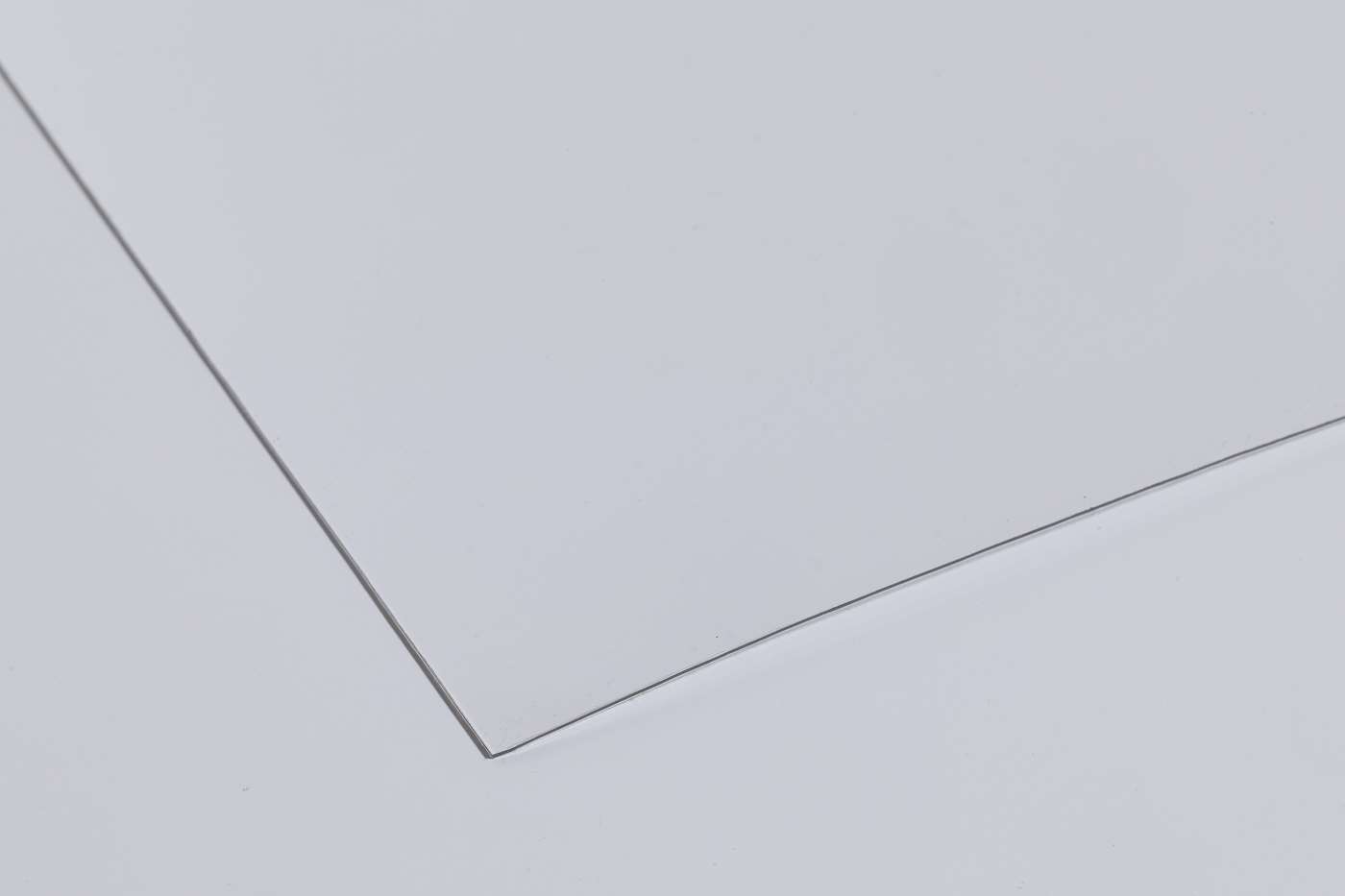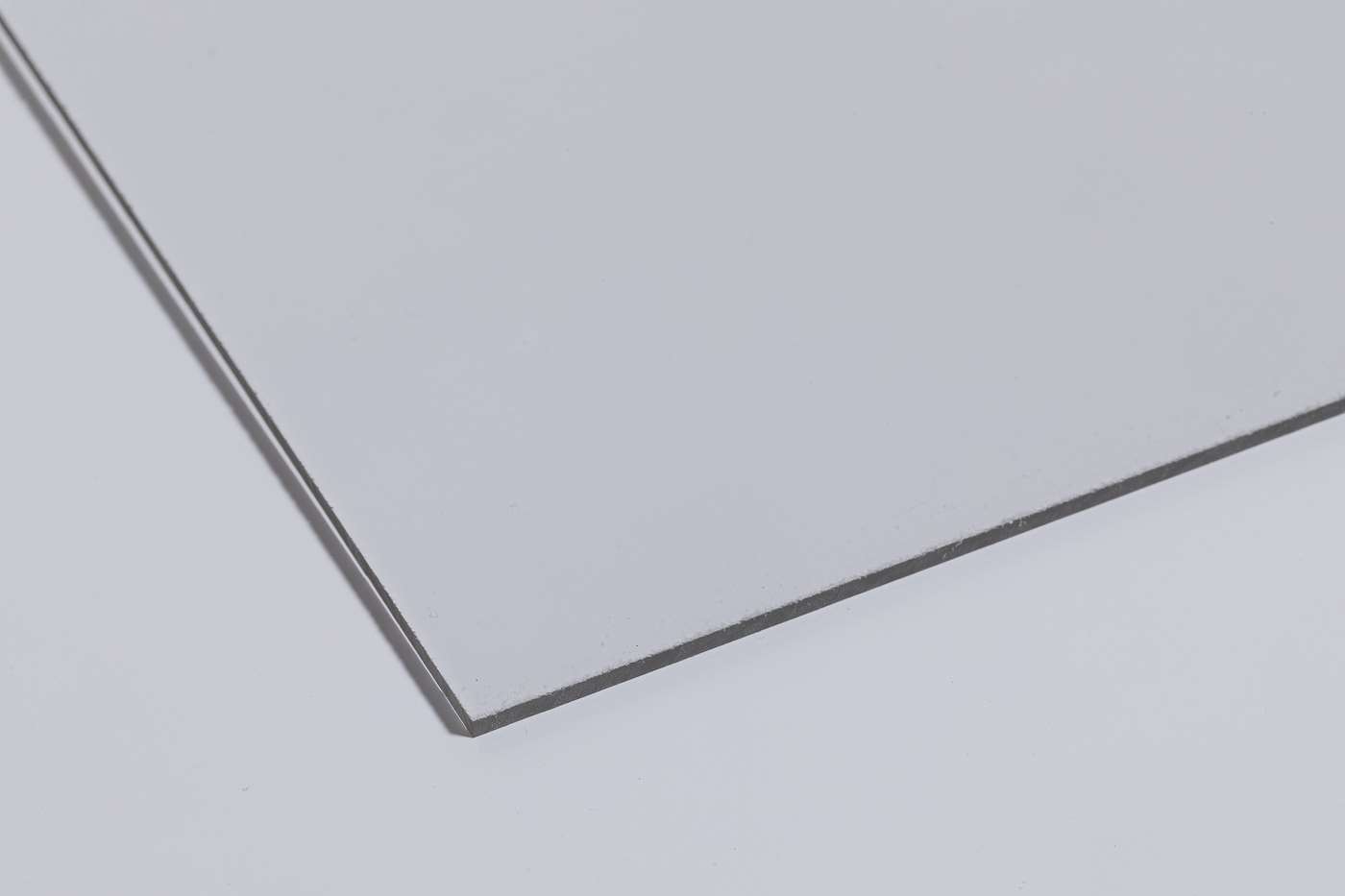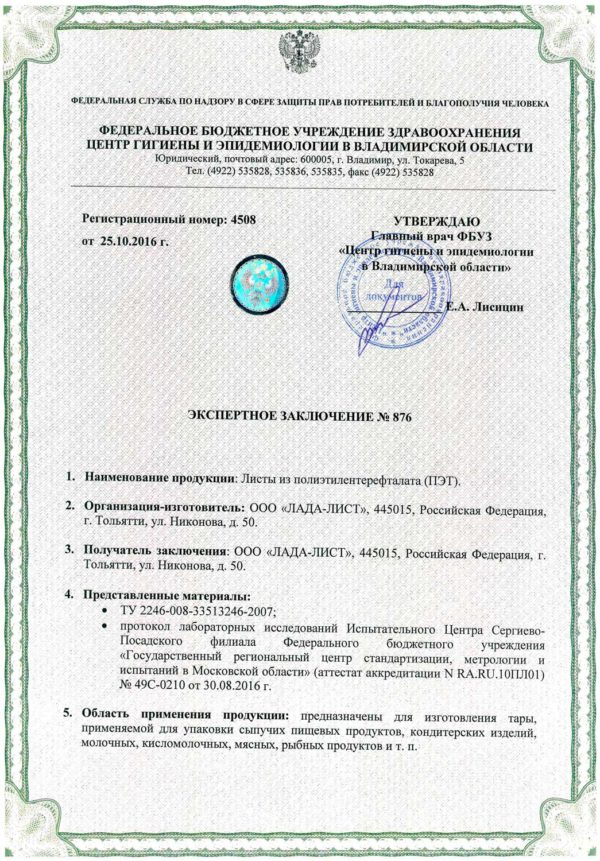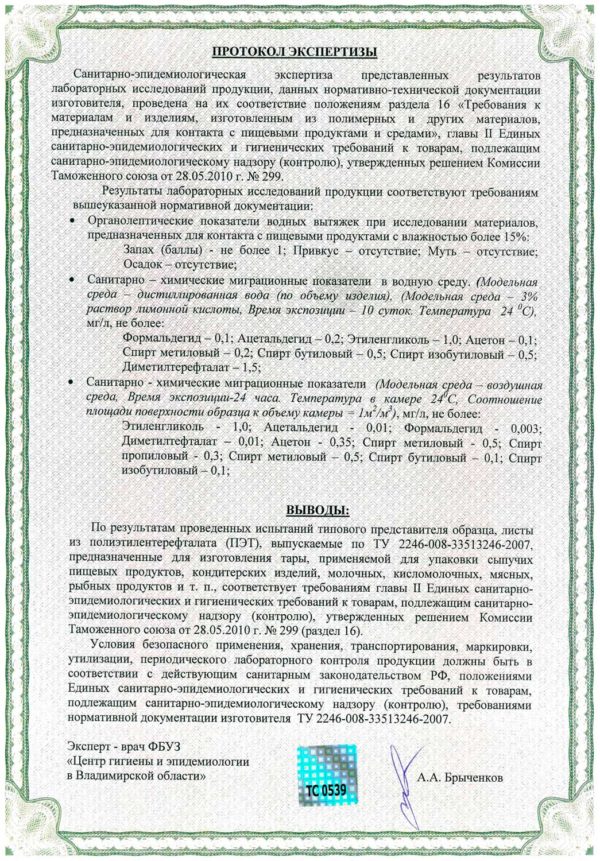Polyethylene terephthalate (PET) sheet by LADA-LIST company is very popular among products made for the food industry. There are two types of sheets: PET-U with a thickness of 0.5 mm to 3 mm, and PET-A with a thickness of 0.28 mm to 0.5 mm.
The glossy surface of PET-U (universal PET) sheets is protected on both sides by thermoformed polyethylene film. For an even imposition of printing by offset and screen printing, the upper and lower surfaces of the sheets are activated by corona charge. Decorative self-adhesive films are perfectly applied to the sheets; they bend perfectly even in a cold condition.
PET-A sheets are produced in white color and transparent without a protective film on both sides activated by corona discharge.
The material is produced using modern extrusion equipment, is of high quality and meets international requirements. With a light transmittance of about 90%, PET sheets are characterized by a very high impact resistance at normal and subzero temperatures (higher than transparent PVC and comparable to monolithic polycarbonate), as well as high tensile strength and the ability to withstand repeated bending.
PET crystallizes easily, so whitish spots may form on parts during molding. For the manufacture of transparent products, it is better not to use sheets with a thickness of more than 2 mm. For these purposes, PET-G. sheets are used.
Volume electrical resistance of PET sheets – 1 * 1014 Ohm*cm
Application area
- Information stalls
- Backlit light boxes (with a low heating temperature to avoid deformation)
- Transparent screens, anti-vandal designs
- Protection of posters, paintings and photographs
- Printing
- Price tags
- Making stencils
- Food packaging and blister
- Creation of demonstration stands, design of sale points, etc.
- Medical protective equipment (masks, screens)
Processing methods
- Stamping
- Pneumatic vacuum forming
- Machining
- Printing
- Bending
- Bonding with two-component adhesives (polychloroprene or vinyl acetate-based hot melt adhesives)
- Thermal, frictional, ultrasonic, high-frequency welding
Delivery form
- Thickness: 0.15-2.0mm
- Width: up to 2100 mm
- The relief is smooth
- Glossy surface
- The surface is protected with PE foil on both sides
Chemical properties
Resistant:
- To solutions of acids and alkalis
- To aqueous solutions of salts
- To fats / lubricants
- To motor fuel
- To mineral oils
Not resistant:
- To concentrated solutions of acids and alkalis
- To halogenated hydrocarbons
Operating temperature
- Maximum temperature of long-term operation: -40 to + 70 ° С
Flammability indicators
- Burns up under the flam influence or due to an appropriate heat amount
- Burns brightly and unstably after being removed from a flame with strong soot formation
- Spontaneous combustion at 390 °C
- Combustion from an external source at 440 °C
Characteristics of PET sheet
| Units | Testing Method, ISO | Value | ||
| Density | g/cm3 | 1183 | 1,4 | |
| Tensile yield strength | MPa | 527 | 50 | |
| Breaking strength | MPa | 527 | 65 | |
| Elongation at break | % | 527-2 | 450 | |
| Notched Charpy Impact Strength | 23°С | kJ/m2 | 179/1ерА | 10 |
| Notched Charpy Impact Strength | -40°С | kJ/m2 | 179/1ерА | 7 |
| Charpy impact strength on sample without notch (rib) | 23°С | kJ/m2 | 179/1ер | н/р |
| Bending temperature under load | 1,80 MPa, | °С | 75-2Ае | 70 |
| 0,45 MPa | °С | 75-2Ве | 75 | |
| Vicat softening point | 10Н/120°С | °С | 306/А120 | 82 |
| 50Н/120°С | °С | 306/В120 | 78 | |
| Rockwell hardness | R-scale | 93 |
CALL US
8 (800) 770-05-52 (free within the Russian Federation)
Togliatti
+7 (8482) 69-10-20
+7 (8482) 69-10-30
+7 (8482) 69-10-31
Moscow
+7 (926) 838-75-93
+7 (915) 176-38-87
Rostov-on-Don
LEAVE AN APPLICATION ONLINE
You can also order plastic sheets
by filling out the detailed online order form on our website.
Additional Information
PET sheet is widely used due to:
- low cost;
- high light transmission – 90%;
- bending resistance and strength;
- good resistance to subzero temperatures;
- the possibility of cutting, drilling, milling the material;
- resistance to deformation upon ingress of water, solutions of dilute acids and salts, fats or oils;
- cold bending capability with a minimum radius calculated by the formula: minimum radius = 150 × sheet thickness.
- If the value obtained is less, it is recommended to use thermoforming, welding thermal, frictional and ultrasonic welding;
- the formation of a reliable bond with two-component adhesives. It is suitable polychloroprene and vinyl acetate hot melt adhesives; inertness to food products.
Polyethylene terephthalate (PET) sheet by LADA-LIST company is very popular among products made for the food industry. The material is produced with the help of modern technology, it is of high quality and meets international requirements.
PET crystallizes easily, so whitish spots may form on parts when molded. For the manufacture of transparent products, it is better not to use sheets with a thickness of more than 1 mm. For these purposes, PET-G sheets are intended.If it is necessary to weld with hot gas, filler rod, friction, resistance welding, it is better to use HDPE.
The production of PET sheets is carried out by the flat-slot extrusion method. The method is intended for the sheets manufacture of different thickness and area. The surface of the sheet is protected on both sides by a polyethylene film and is corona-activated. Therefore, screen or offset printing can be carried out on the surface of the sheets and UV layers can be applied.Short-term exposure to UV light does not affect the quality and physical characteristics of the material. Temperatures above 65 ° C should be avoided during drying.
The LADA-LIST company is the largest producer of polyethylene terephthalate in Russia. We have great experience in the sheets from various polymers, so we can recommend material for the manufacture of products with certain properties.



